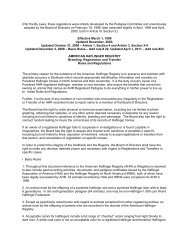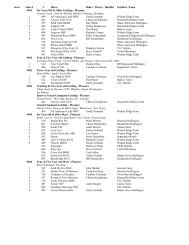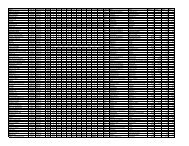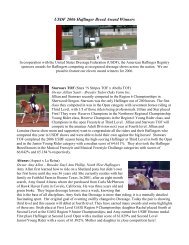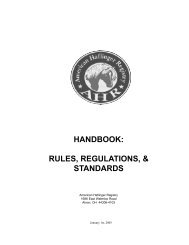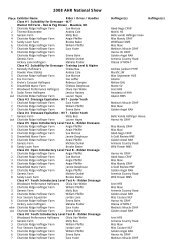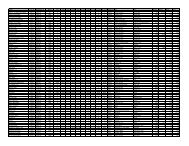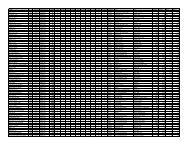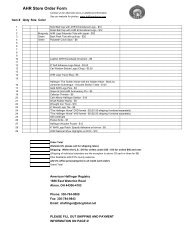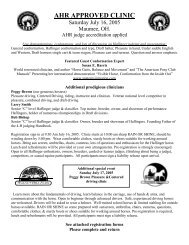handbook - American Haflinger Registry
handbook - American Haflinger Registry
handbook - American Haflinger Registry
You also want an ePaper? Increase the reach of your titles
YUMPU automatically turns print PDFs into web optimized ePapers that Google loves.
CONTESTING CLASS SPECIFICATIONSI. GENERALA. These classes are timed events. The exhibitors will enter the arena and the gate will be closed before starting theirrun. Exhibitors will compete in order listed in show book unless other arrangements are made with the Ring Masterprior to the class.B. Late entries will be placed at the front of the order and are the first to compete. Once the starting line is crossed,broken equipment will not be a reason for a re-run. Malfunction of the timer will entitle the exhibitor to a rerun.C. In traditionally Western gymkhana classes (such as barrels or poles), Western attire is strongly suggested. ASTM/SEI safety helmets with chinstraps are highly recommended for all gymkhana events.D. Dress must be appropriate with the style of saddle. Proper riding shoes with heels are required.E. Tiedowns, hackamores, martingales, splint boots, polo wraps, and bell boots are allowed.F. Prohibited equipment includes: wire curb straps, twisted wire mouthpiece bits, and wire nosebands.II.POLE BENDINGA. Competition pattern will be in the show book or will be posted one hour before event.B. Each competitor will begin from a running start and time shall begin and end as the horse’s nose crosses the line. An electrictimer or at least two stop watches shall be used. The time indicated by the electric timer or the average time of the watches usedby official timers will be the official time.C. The pole bending pattern is to be run around six poles. Each pole is to be 21 feet apart, and the first pole is to be 21 feet from thestarting line. Poles shall be set on top of the ground and approximately six feet in height.D. A horse may start either to the right or to the left of the first pole and then run the remainder of the poles accordingly.E. Knocking over a pole shall carry a five second penalty. Failure to follow the course will result in disqualification. A contestantmay touch a pole with his or her hand in pole bending, but may not hold it up to keep it from falling over.F. The judge, at his/her discretion, may disqualify a competitor for excessive use of a bat, crop, whip or rope, especially in front ofthe cinch.III.BARREL RACINGA. Competition pattern will be in the show book or posted one hour before event. Order of competition will be listedin the show book, with late entries being added to the front of this order.B. An electric timer or at least two stop watches shall be used. The time indicated by the electric timer or averagetime of the watches used by official timers will be the official time.C. Timing shall begin as soon as the horse’s nose reaches the starting line and will be stopped when the horse’s nosepasses over the finish line.D. Three barrels will be set in a triangular (or cloverleaf) pattern. The competitor is allowed a running start. At asignal from the starter, the competitor will run to barrel number 1 (barrel on the right), make a right hand turnaround it, then go to barrel number 2 (barrel to the left of the starting line), make a left turn around the barrel, thengo to barrel number 3, make a left turn around the barrel; then sprint to the finish line, passing between barrelsnumber 1 and 2. This barrel course may also be run to the left. For example, the competitors will go to barrelnumber 2, turning to left around this barrel, then to barrel number1, turning to the right around the barrel, then to barrel number 3, again turning right around the barrel, followed bythe final sprint to the finish line crossing between barrels number 1 and 2.7/08 VI-A-1167




